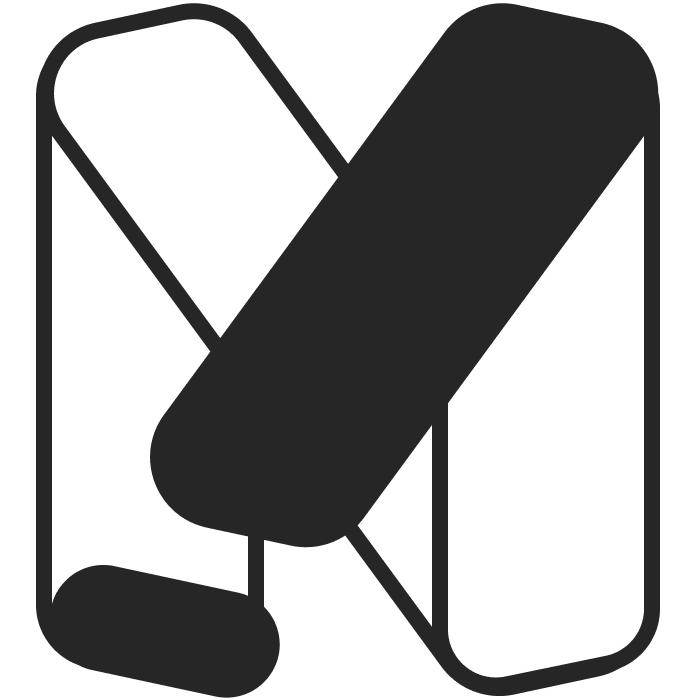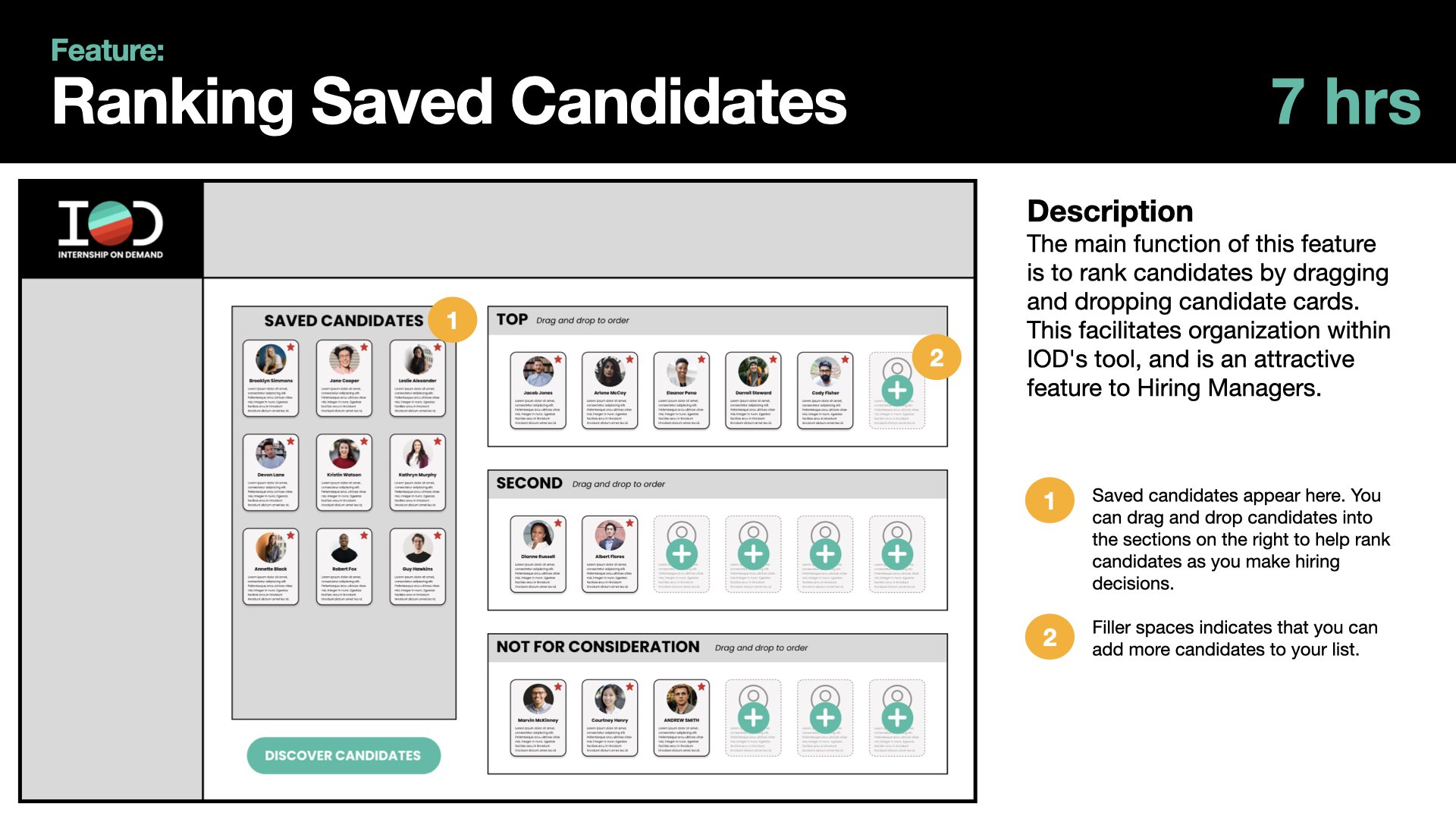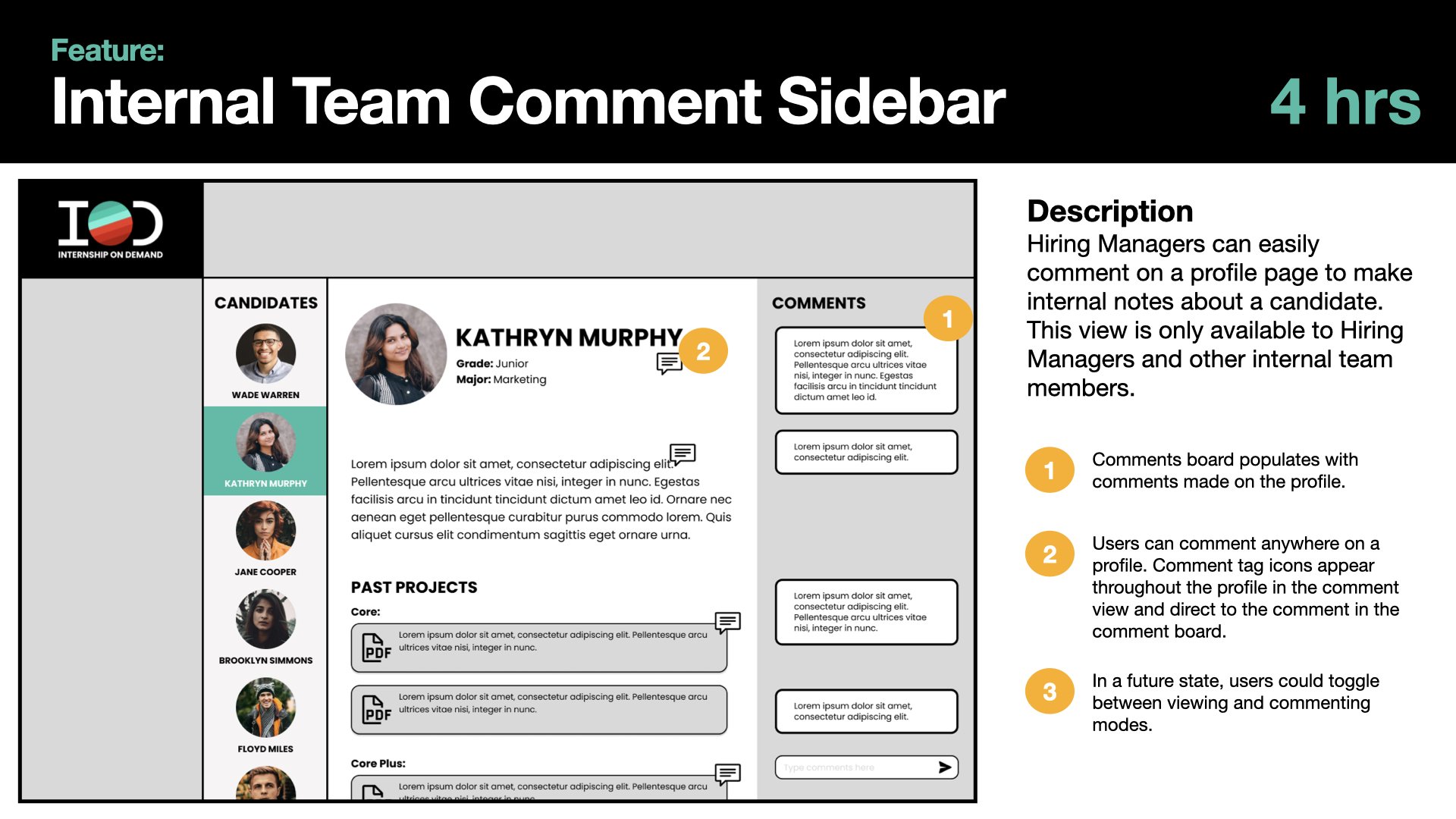Internship on Demand
Overview
✴️ Impact Statement
Internship on Demand (IOD) exists to recreate the early talent experience for college students and employers. IOD ensures the right candidate finds the right career, company, and role through their multi-sided platform. Their primary product, called “pre-internships”, is a turnkey solution for employers to share their company culture, career readiness skills, and open roles with incoming talent. Their current top priority is building out the hiring manager experience.
I proposed a new feature set within scope for the hiring manager-facing side of IOD’s product.
🙎🏼♂️ My Roles
UX Researcher, UX Designer
Pen and paper
Google Sheets
Figma
Keynote
🛠 Tools
📈 Methods
Competitive analysis
Stakeholder interviews
Scoping
User journey mapping
Kano analysis
Wireframing
🔎 Identifying Pain Points
I approached this problem through three main methods: a competitive analysis, a stakeholder interview, and a user journey map.
Our competitive analysis revealed that there are several big players with robust hiring manager-facing platforms built out. This is a space that IOD needs to invest in in order to be a competitive product.
We then interviewed the CEO of IOD to gain insights into the current process and pain points from IOD’s perspective. The stakeholder interview deepened my understanding of IOD’s product, and the solutions that IOD are trying to offer. It also made some key issues abundantly clear:
Candidate profiles are only visible to hiring managers after a link has been manually emailed out.
IOD’s CEO manually compiles comments on candidates from Google Forms into a single doc that he then emails to hiring managers.
A conversation with IOD’s CEO informs recommendations for hiring candidates.
With my understanding of the client space from the competitive analysis, and the insights from the stakeholder interview, I built a user journey map to communicate the current state of IOD’s hiring manager product.
The hiring manager journey map that I created for the current state of IODThe most notable pain points occur right after a candidate has completed their pre-internship, and during the main point of contact hiring managers interact with IOD. This was a significant gap that I set to fill with my feature recommendations.
⏳ Limitations on Design
The biggest thing I learned in this project was how to work with constraints. Previous projects I had worked on were blue sky, and I got to design freely. In this project, I had to sort through lots of different considerations to prioritize my work. The constraints included:
Tech scoping
Features constrained by a time budget
Kano analysis results
My own available time for the project
We met with IOD’s developer who scoped each proposed feature from our team (over 75 features). It was fascinating to see the developer’s side of the project and break out of my UX silo. I learned a lot from this process. Some features were scoped completely out of budget, while others were scoped much quicker than my assumptions had been.
Tech Scoping & Time Budget
Some of the scoped feature cards, dot-voted with hours A cool part of this process was narrowing down our feature options. Taking into consideration scope and impact, we each had 40 hours to dot-vote on feature that had potential for high impact. Our voting narrowed the feature list down to 10 features. These were the features used in our Kano analysis.
The 10 features narrowed down through dot-votingWhile going through this project, I was very driven by the constraints and determined to maximize the budgeted hours we had for the features. However, I didn’t take into account my own schedule and available time to work on those features. About halfway through this project I adjusted my expectations for the amount of work I could do in a short timeframe. This allowed me to do better work on fewer features, and communicate the thinking behind my designs that could carry over to future design decisions.
Presonal Time Constraints
✅ Making Informed Design Choices
We ran a Kano analysis on the 10 features, using survey results from 4 hiring managers. View the full Kano analysis here.
Kano analysis results and scopingAnalysis of one featureOf the 10 proposed features, 1 was “must-be”, 3 were “performance”, and 3 were “attractors”. With a budget of only 40 hours, I had to selectively choose the features I recommended to IOD. Using the results of the Kano analysis, plus the information gained from our stakeholder interview, I chose a variety of features that would would both significantly increase IOD’s performance and provide new and useful tools to hiring managers. IOD can leverage their value add with the following features that I proposed:
View/Filter Candidates (with 5 filter sets)
Candidate Discovery Mode
Ranking Saved Candidates
Internal Team Comment Sidebar
Success/Retention Predictor
Candidate Organization
I created high-fidelity annotated wireframes of my proposed features to illustrate how they address pain points. A couple examples are below. View my full feature recommendations report here.
💻 Mocking Up Features
Ranking Saved Candidates featureInternal Team Comment Sidebar feature⏩ Next Steps
For next steps, I recommend that IOD build a dashboard to house my proposed features. This was scoped to take 20 hours with an additional 5 hours per widget. Because we only had a 40 hour budget to work with, I focused my recommendations on the features that might appear in a dashboard but could exist as standalone features.
I also recommend that as IOD develops their hiring manager tool they get input from more stakeholders. We ran a Kano analysis with the 4 hiring managers that IOD sourced for us, which gave us some insights into user needs but not a complete picture. If IOD were to source 10-15 hiring managers for the next round of feature analysis, they would get a better understanding of what features are really important to users. This will be vital to IOD as they look to scale.







